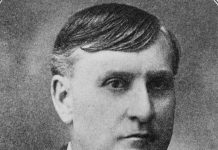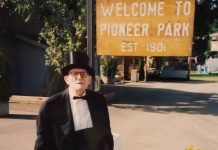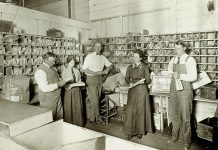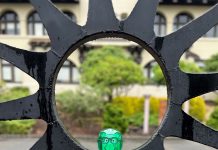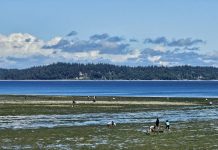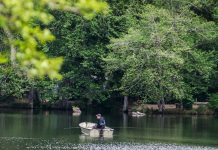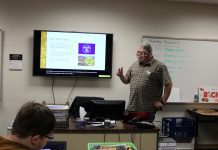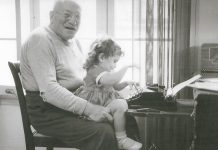The Washington State Library offers many resources to researchers. One of their newest digital projects is “Postmarked Washington,” an interactive postal history of Washington. It provides a window into Whatcom County community history through its post offices.
Guy Reed Ramsey
“Postmarked Washington” was created by Guy Reed Ramsey (1894-1980). A forester, “he was first and foremost a post office paraphernalia collector,” says Mary Schaff, Northwest Librarian who led the project. His passion for collecting turned into a quest to document the history of every post office in Washington. He also researched post offices in Iowa and Oregon.
Ramsey was not a professional historian, but “he earned the title,” asserts Schaff, praising his careful and accurate research in the age before the Internet. He did much of his research at the Washington State Library using their manuscript, newspaper and printed collections. An oral historian, he also toured the state, talking to people behind the counter at every post office he visited.

While Ramsey researched all of Washington’s counties, much of his research went unpublished both before and after his death, including Whatcom County. The situation left Ramsey bitterly disappointed, according to his son Fred Ramsey, a retired Oregon State University professor. Fred has been a key supporter of the State Library’s “Postmarked Washington” project.
Ramsey ended the bulk of his research around 1960. He prepared a manuscript, edited and ready to print. In 1966, he lent this manuscript to the State Library for microfilming. The original manuscript is now lost.
Postmarked Washington
Over the years, many researchers have used Ramsey’s microfilm. One of these was Mary Schaff, finding it helpful after being assigned the State Library’s designee for the Washington State Committee on Geographic Names.
Now, it was time to make the project more accessible. The project began about four years ago. The main workers are Mary Schaff, Reference Librarian Julie Thompson, and Application Developer Evelyn Lindberg.
The team transformed Ramsey’s manuscript into a digital database, divided by county. The manuscript was transcribed by making PDFs of each page and using the program Omeka to record the text. But this proved difficult, admits Schaff. The program is not very good at reading old microfilm, and sometimes it was faster to simply transcribe it herself.
After transcribing each entry, the information was put onto a template that reflected both Ramsey’s original text and the library’s needs, especially mapping. Ramsey located post offices by township and range. Modern researchers find Google Maps more user-friendly. Whatcom County’s long shape, Schaff admits, made it particularly tricky to fit into a map.
The team decided to let Ramsey’s research “stand on its own,” explains Schaff, making limited corrections in the comments. Readers can also leave their own corrections and comments. The most common corrections are name misspellings, which Schaff finds unsurprising. Post office applications went through many hands, making spelling issues common.
The team also added additional information, such as newspaper articles. These stories make the project come to life for readers. Schaff and Thompson agree that this and all the unexpected discoveries along the way made the project both “immersive” and “fun.”
The site includes further resources, both online and at the State Library. There is also a glossary of postal terms.
“Postmarked Washington” launched in October 2024. It is hosted by Primarily Washington, which is home to a wide variety of digital resources about Washington’s history.
Five counties were among the original group. Whatcom County was the very first completed. With 86 entries, it was one of Ramsey’s most significant sections. It also offered the team lessons and practice to help them with the project going forward.
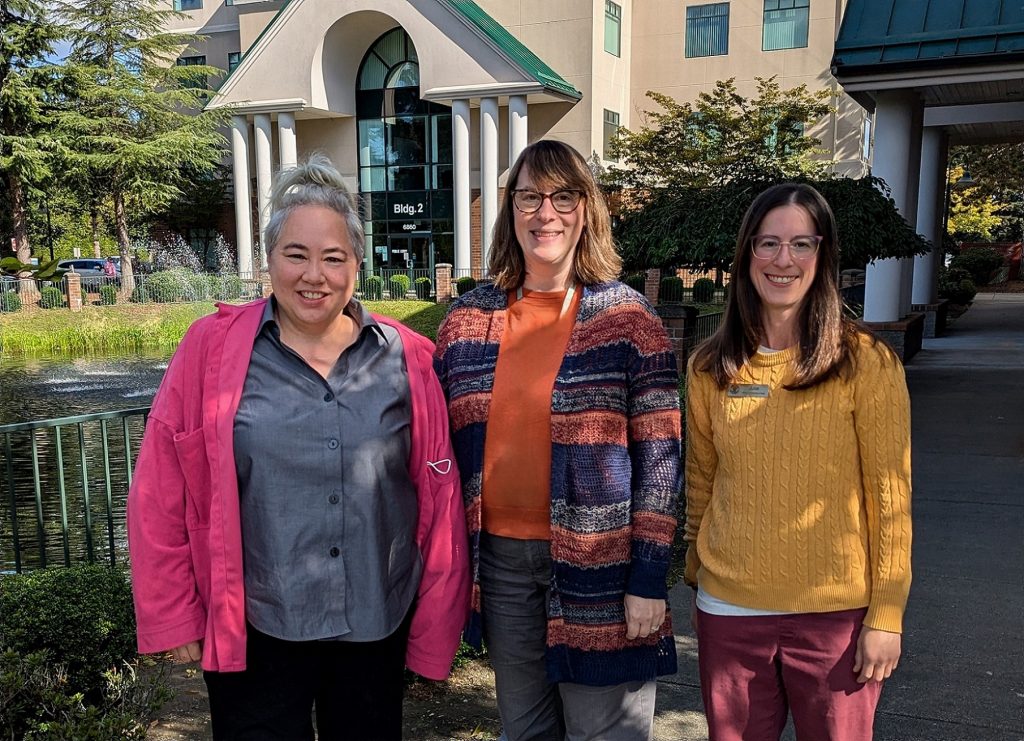
Whatcom County’s Rich Postal Heritage
Besides being helpful to genealogists, “Postmarked Washington” offers insights into local, regional, economic and women’s history. Post offices tell the story of their community, Schaff continues. Many of them were short-lived, as their communities “blip in and out of existence.” Bellingham had a “unique” history, says Schaff, as it was formed from the merger of four towns, including Bellingham, Fairhaven, Sehome, and Whatcom.
As towns changed, so did their post offices. In Whatcom County, Thompson highlights, Old Ferndale and Ferndale established their own post offices. But, she laughs, after they were discovered to be only “a stone’s throw away” from each other, they were merged.
Postal history is also an essential part of women’s history. Many women were official postmistresses, but even when men were postmasters, it was understood in the early years that their wives and daughters often did the daily work. Many post offices were run out of homes and businesses. A careful researcher, Ramsey, recorded women’s full married and maiden names, which is critical for genealogical research.
But it is the stories that make postal history come alive. One of the most surprising things the team found in Whatcom County concerned Camp Semiahmoo. During territorial days, it was in Washington, but boundary changes later put it in British Columbia. The post office was moved to Blaine.
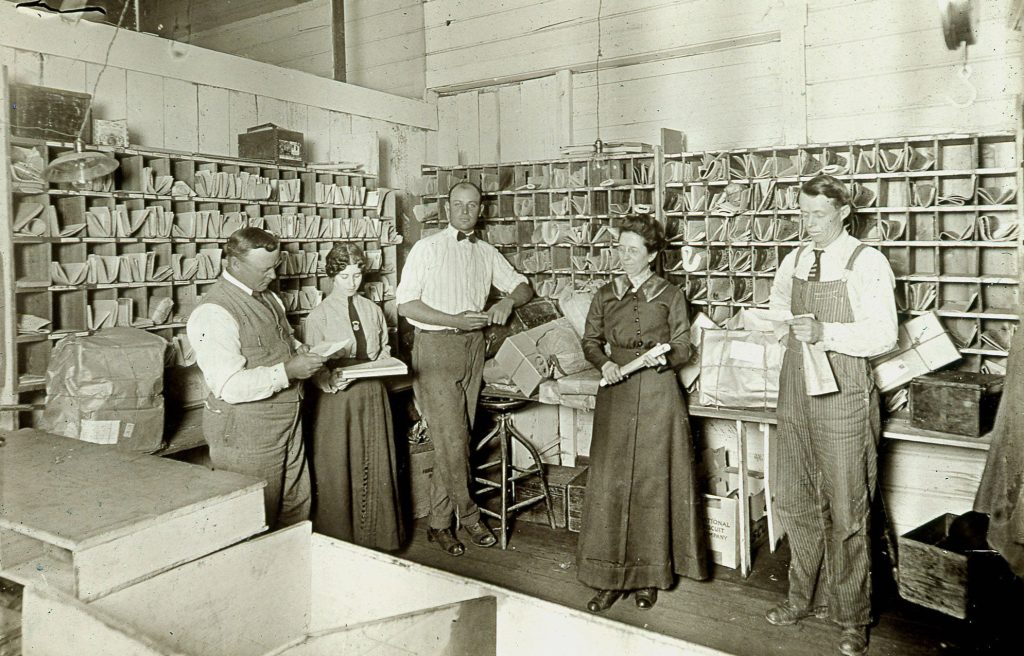
The Future of Postmarked Washington
Work on “Postmarked Washington” will continue as time allows. The project has no special funding or dedicated staff. “It’s a labor of love,” says Schaff. The plan is to eventually digitize all 13 of Ramsey’s unpublished counties before adding his published work. The team also seeks to engage students with the project. Thompson has created a postal history zine project as part of the “Postmarked Washington” Digital Backpack created for Primarily Washington.
Through “Postmarked Washington,” researchers can gain insight into Whatcom County’s rich history. Community history comes alive with the stories of local post offices.






